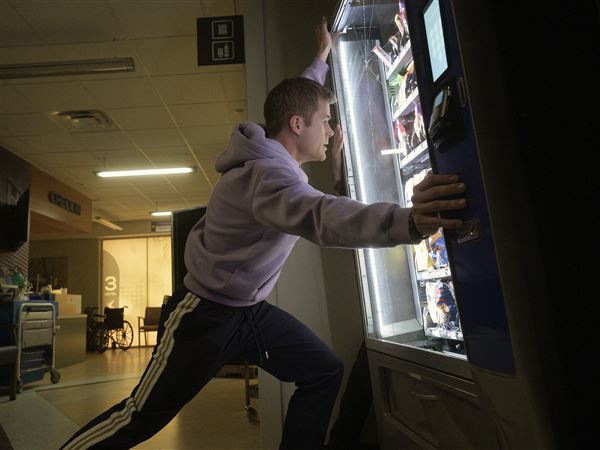Network-attached storage, or NAS, may be one of the best-kept secrets in personal technology.
"It is one of the fastest-growing categories of data storage, but most consumers still haven't heard of NAS," said Seema Lindskog, director of product marketing at Western Digital, a hard drive manufacturer that also sells NAS products. "Most people are still using external hard drives for backup."
For the uninitiated, NAS provides a central hard drive on which you can store, share and back up all files from multiple computers in the household. The NAS drive connects via an Ethernet cable to a wireless home-network router, which enables laptops and other devices equipped with Wi-Fi networking to use the drive wirelessly.
Unlike an external hard drive, an NAS device has a processor and uses its own operating system for storing and sharing photos, music, video and personal files.
A NAS drive costs about $75 to $100 more than an external hard drive with the same storage capacity. "But the value goes up when you have multiple computers in the house -- that's where NAS drives prove their worth," said Ross Rubin, director of industry analysis for the NPD Group, a market research firm. "It enables all PCs to access and store files on the drive without having to physically plug in a drive to each computer."
Makers of NAS devices say home users primarily use the drives for data backup; centralized storage and file sharing among multiple computers; and remote access to photos, video, music and other files.
Most NAS drives enable families to create one consolidated library of photos, videos and digital music that can be streamed to high-definition TVs and other networked devices in the home. To do so, you will need a digital media adapter or a game console like the Xbox 360 or PlayStation 3 that connects to the TV.
NAS drives also have software that can be set to automatically back up every computer on the network. The software enables you to select files, folders and drives to back up, as well as designate the time and day of the week for automatic backups. You will need to install the software on each computer on the network.
A more sophisticated NAS device contains two hard drives and automatically maintains identical copies of data on each drive to help ensure foolproof data storage. The beauty of this setup, known as mirroring or RAID 1, is that if one hard drive fails, the information will be safe on the other one.
The Facebook-driven imperative to share has prompted NAS manufacturers to integrate with social-networking sites for easy photo and video uploading to sites like YouTube, Flickr and, of course, Facebook. And rather than posting material on public Web sites, many NAS drives also enable you to invite friends and family to view photos, video and other content stored on the drive itself.
Most NAS devices let users securely reach their multimedia files remotely, a feature that is becoming increasingly popular, said Ms. Lindskog of Western Digital. "Even if the home PC is turned off, the data will still be available to you anywhere, even if you are sitting in an Internet coffee shop in China."
And you do not necessarily need a PC to get to those files. With newer drives like the Netgear Stora, iPhones, BlackBerrys and iPod Touches can use that data remotely.
Shopping Checklist
When shopping for NAS drives, the first thing to consider is storage capacity, which typically ranges from 500 gigabytes to 4 terabytes. To determine how much space you need, calculate the amount of storage you use now on all household computers, then double it.
If you are buying a dual-drive NAS, Bill Hansen, global product manager for NAS at Iomega, recommends buying four times your current storage capacity because RAID 1 mirroring will offer half the total usable storage.
Here are some other shopping tips for NAS devices:
¶If you want maximum backup and storage protection, get a dual-drive NAS device. The redundancy of mirrored hard drives offers the best data protection.
¶Make sure the NAS device includes backup software that is easy to use (check product reviews at CNet.com or PCMag.com). If you use Apple's built-in Time Machine backup software on your Mac, look for a drive that is compatible.
¶Look for a drive that offers remote access. Cost should range from $10 to $20 a year (the first year is often free).
¶Make sure the NAS device has a U.S.B. port for adding an external hard drive to expand storage capacity or to wirelessly share a printer across the home network.
¶For seamless connection to other devices on the home network, look for products that support Universal Plug and Play, or UPnP, and Digital Living Network Alliance, or D.L.N.A., certification, which will help ensure that the NAS drive plays nicely with other D.L.N.A. home devices like an Xbox 360 or PlayStation 3.
Device Picks
NAS devices differ in capacity, number of hard drives and features. Here are four devices worth considering:
EASY CHOICE FOR NETWORK NOVICES The Home Media Network Hard Drive from Iomega ($200 for one terabyte; go.iomega.com) is simple to set up and has an intuitive Web-based interface that is perfect for NAS novices. It uses a single one-terabyte hard drive for storage, which keeps the price low and its size compact (the device is not much larger than a standard external hard drive). In addition to Retrospect HD software for daily automatic backups, Iomega includes a QuikProtect backup option that provides continuous file-level backup protection. Remote file access is free the first year, then $10 a year.
DUAL DRIVE, DOUBLE SAFE The MyBook World Edition II from Western Digital ($320; wdc.com) has two terabytes of storage total on dual hard drives. The drives are configured to mirror, maintaining identical copies of files on each drive to ensure data protection. Unlike most NAS devices, the MyBook World Edition does not require software installation. Users can plug it in and connect to a router, then it automatically attaches to the network. The WD Anywhere Backup software continuously backs up computers: every time you save a file, it is updated. Basic remote access is free.
READY FOR THE FUTURE The Netgear Stora MS2110 ($230; netgear.com) comes with two hard drive bays, one of which contains a one-terabyte drive. If you need a second drive, simply slip it into the bay, no screwdriver necessary. The Stora is intended for those new to networking and has a slick, intuitive Web-based interface. Its premium service package provides integration with social-networking sites like Facebook and Flickr, and offers remote access via an iPhone or BlackBerry. Premium service is free for 30 days and costs $20 a year thereafter.
DOUBLE DUTY FOR MACS The Apple Time Capsule ($299 for one terabyte, $499 for two terabytes; apple.com) fuses a dual-band 802.11n router with a NAS drive in an attractive package. The Time Capsule can be used on Windows and Mac OS computers, but is particularly great for Macs that use the built-in Time Machine utility for effortless backup. The Time Capsule cannot house a second drive but does offer a U.S.B. port for adding an external drive or sharing printers. You can reach files remotely only with a Mobile Me account, a suite of online services that costs $99 a year.
First Published: January 14, 2010, 7:00 a.m.














